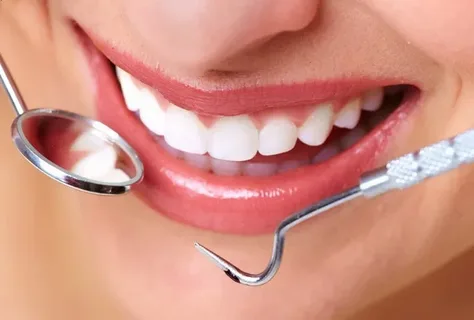Your smile is often the first thing people notice about you, and it plays a crucial role in how you feel about yourself. If you’ve been hiding your smile due to stained, chipped, crooked, or missing teeth, a smile makeover could be the transformative solution you’ve been seeking. This comprehensive cosmetic dental treatment combines multiple procedures to address various aesthetic concerns, giving you the confident, radiant smile you deserve.
A smile makeover goes beyond simple cosmetic improvements. It’s a carefully planned treatment that considers your facial features, skin tone, hair color, and personal preferences to create a harmonious, natural-looking result. Unlike single cosmetic procedures, a makeover takes a holistic approach to your smile, addressing multiple issues simultaneously for maximum impact.
Whether you’re dealing with years of staining, childhood dental trauma, or simply want to enhance what nature gave you, understanding what’s involved in a smile makeover can help you make an informed decision about this life-changing investment in your appearance and self-confidence.
What Is a Smile Makeover?
A smile makeover is a customized combination of cosmetic dental procedures designed to improve the appearance of your teeth, gums, and overall smile. Unlike routine dental care that focuses on oral health, a smile makeover prioritizes aesthetics while maintaining or improving function.
The process begins with a comprehensive evaluation of your current smile, facial structure, and personal goals. Your cosmetic dentist will consider factors like tooth color, alignment, size, shape, and the relationship between your teeth and gums. They’ll also assess how your smile complements your facial features and personal style.
What makes a smile makeover unique is its comprehensive nature. Rather than addressing one issue at a time, your dentist creates a treatment plan that tackles multiple concerns simultaneously. This coordinated approach ensures that all elements of your new smile work together harmoniously, creating results that look natural and balanced.
The makeover process typically involves multiple appointments over several weeks or months, depending on the complexity of your treatment plan. This timeline allows for proper healing between procedures and gives you time to adjust to your new smile gradually.
Common Procedures Included in Smile Makeovers
Teeth Whitening and Stain Removal
Professional teeth whitening forms the foundation of many smile makeovers. Years of coffee, wine, tobacco use, and natural aging can leave teeth looking yellow or gray. Professional whitening treatments can brighten teeth by several shades, providing a fresh canvas for other cosmetic improvements.
Unlike over-the-counter whitening products, professional treatments use stronger bleaching agents and custom-fitted trays for even, predictable results. Some patients may benefit from in-office laser whitening for immediate results, while others prefer take-home kits for gradual improvement.
Porcelain Veneers
Veneers are thin shells of porcelain bonded to the front surface of teeth to improve their appearance. They can address multiple issues simultaneously, including chips, cracks, stains, minor gaps, and slight misalignment. Veneers are particularly effective for teeth that don’t respond well to whitening or have intrinsic stains.
The process involves removing a small amount of tooth enamel to accommodate the veneer thickness. Your dentist will take impressions for custom fabrication, and temporary veneers protect your teeth while permanent ones are created. Once bonded, veneers can last 10-15 years with proper care.
Dental Crowns and Bridges
Severely damaged or missing teeth may require crowns or bridges as part of your makeover. Crowns completely cover damaged teeth, restoring their shape, size, and appearance while providing structural support. Bridges replace missing teeth by anchoring artificial teeth to adjacent natural teeth.
Modern crowns and bridges use tooth-colored materials like porcelain or ceramic, making them virtually indistinguishable from natural teeth. These restorations not only improve appearance but also restore proper chewing function and prevent remaining teeth from shifting.
Orthodontic Treatment
Crooked or misaligned teeth can significantly impact your smile’s appearance. Traditional braces or clear aligners like Invisalign can straighten teeth as part of your makeover. Many adults prefer clear aligners because they’re virtually invisible and removable for eating and cleaning.
Orthodontic treatment typically takes longer than other cosmetic procedures, often 12-24 months. However, the results can be dramatic, improving both appearance and function while making teeth easier to clean and maintain.
Gum Contouring and Reshaping
Sometimes the issue isn’t with your teeth but with your gums. A “gummy” smile, where too much gum tissue shows when you smile, can be corrected through gum contouring. This procedure removes excess gum tissue to reveal more of your teeth, creating better proportions.
Conversely, if recession has exposed too much tooth structure, gum grafting can restore proper coverage. These procedures help create the ideal frame for your teeth, enhancing the overall appearance of your smile.
Dental Implants
Missing teeth can be replaced with dental implants as part of a comprehensive makeover. As mentioned in previous discussions about implants, they provide superior function and aesthetics compared to other replacement options. Implants preserve jawbone structure and don’t affect adjacent teeth, making them ideal for smile makeovers.
The implant process involves surgical placement of a titanium post into the jawbone, followed by attachment of a custom crown. While implants require a longer healing period, they provide permanent, natural-looking results that integrate seamlessly with your makeover.
How a Cosmetic Dentist Plans Your Makeover
Initial Consultation and Assessment
Your smile makeover journey begins with a comprehensive consultation where your cosmetic dentist evaluates your current oral health, discusses your goals, and examines your facial features. Digital photography and sometimes video analysis help document your current smile and plan improvements.
Your dentist will ask about specific concerns, lifestyle factors, and aesthetic preferences. They’ll also review your medical history and current medications to ensure you’re a good candidate for various procedures. This thorough assessment forms the foundation of your personalized treatment plan.
Digital Smile Design Technology
Many cosmetic dentists now use digital smile design software to show you potential results before treatment begins. This technology allows you to see how different procedures might change your appearance, helping you make informed decisions about your treatment options.
Digital planning also helps your dentist coordinate different procedures and communicate with dental laboratories for precise restoration fabrication. This technology reduces surprises and ensures you’re comfortable with the planned outcome before treatment begins.
Treatment Sequencing and Timeline
Your cosmetic dentist will create a detailed treatment plan that sequences procedures in the optimal order. For example, orthodontic treatment typically comes first, followed by any necessary restorative work, and finishing with cosmetic procedures like veneers or whitening.
The timeline depends on your specific procedures but may range from a few weeks for simple makeovers to over a year for complex cases involving orthodontics or implants. Your dentist will provide a realistic timeline and help you understand what to expect at each stage.
Temporary Solutions and Comfort Measures
During multi-stage makeovers, temporary restorations ensure you’re never without teeth or left with an unfinished appearance. These temporary solutions protect prepared teeth and give you a preview of your final results while permanent restorations are being fabricated.
Your dentist will also discuss comfort measures and pain management strategies for procedures that might cause discomfort. Most cosmetic procedures involve minimal discomfort, and any post-treatment sensitivity typically resolves quickly.
What to Expect During Your Smile Makeover Journey
Preparation Phase
Before beginning cosmetic work, your dentist will address any underlying oral health issues. This might include treating cavities, gum disease, or infections. A healthy foundation is essential for successful cosmetic results and long-term satisfaction with your makeover.
You may need to adjust certain habits like smoking or teeth grinding that could affect your results. Your dentist will provide specific pre-treatment instructions and may recommend a special mouth guard if you grind your teeth at night.
Treatment Phase
The treatment phase involves completing each procedure according to your planned sequence. Appointments may be scheduled close together for simple procedures or spread out over months for complex makeovers. Your dentist will monitor your progress and make adjustments as needed.
Communication is crucial during this phase. Don’t hesitate to discuss any concerns or discomfort with your dentist. Minor adjustments during treatment can significantly impact your final satisfaction with the results.
Healing and Adjustment Period
After completing your makeover, you’ll need time to adjust to your new smile. This adjustment period is both physical and psychological. Your mouth needs time to adapt to new restorations, and you may need time to get used to your improved appearance.
Some sensitivity or minor discomfort is normal immediately after treatment, but this typically resolves within a few days to weeks. Your dentist will provide specific aftercare instructions and schedule follow-up appointments to monitor your healing.
Final Results and Long-Term Care
Your final results will be evident once all procedures are complete and any initial sensitivity has resolved. Most patients are thrilled with their new smile and report increased confidence in social and professional situations.
Long-term success depends on proper care and maintenance. This includes regular dental checkups, good oral hygiene, and protecting your investment through habits like wearing a night guard if you grind your teeth.
Maintaining Your New Smile Long-Term
Daily Oral Hygiene Routine
Your new smile requires the same excellent oral hygiene as natural teeth. Brush twice daily with fluoride toothpaste, floss regularly, and use an antimicrobial mouthwash if recommended. Some restorations may require special cleaning techniques, which your dentist will demonstrate.
Avoid habits that can damage your new smile, such as chewing ice, opening packages with your teeth, or using teeth as tools. These behaviors can chip or crack both natural teeth and restorations.
Regular Professional Maintenance
Schedule regular dental checkups and cleanings to maintain your smile makeover results. Professional cleanings remove plaque and stains that daily brushing can’t eliminate, keeping your smile bright and healthy.
Your dentist will also monitor your restorations for any signs of wear or damage and can address issues before they become major problems. Early intervention helps extend the life of your cosmetic work and maintains optimal appearance.
Lifestyle Considerations
Certain foods and beverages can stain teeth and restorations over time. While you don’t need to eliminate these completely, moderation and proper oral hygiene can help maintain your results. Using a straw for staining beverages and rinsing with water afterward can help minimize discoloration.
If you participate in contact sports, consider wearing a custom mouthguard to protect your investment. Your dentist can create a guard that fits comfortably over your new restorations while providing adequate protection.
Frequently Asked Questions About Smile Makeovers
How long do smile makeover results last?
The longevity of your smile makeover depends on the specific procedures performed and how well you maintain your results. Veneers typically last 10-15 years, crowns can last 15-20 years, and dental implants can last a lifetime with proper care. Regular maintenance and good oral hygiene significantly extend the life of cosmetic work.
Are smile makeovers painful?
Most cosmetic dental procedures involve minimal discomfort. Your dentist will use local anesthesia when necessary, and any post-treatment sensitivity typically resolves within a few days. Many patients are surprised by how comfortable the process is compared to their expectations.
How much does a smile makeover cost?
Smile makeover costs vary widely depending on the procedures involved, the complexity of your case, and your geographic location. Simple makeovers involving whitening and minor cosmetic work may cost a few thousand dollars, while comprehensive makeovers with multiple procedures can cost significantly more. Many dental practices offer financing options to make treatment more affordable.
Can anyone get a smile makeover?
Most people are candidates for some type of smile makeover, but a thorough evaluation is necessary to determine the best approach for your situation. Underlying oral health issues must be addressed first, and certain medical conditions may affect treatment options. Age alone is rarely a limiting factor for cosmetic dental treatment.
Transform Your Life With a Beautiful Smile
A smile makeover is more than just a cosmetic enhancement—it’s an investment in your confidence, self-esteem, and quality of life. The combination of advanced dental techniques, high-quality materials, and artistic skill can create dramatic improvements that look completely natural.
The journey to your new smile requires patience and commitment, but the results can be truly life-changing. Many patients report feeling more confident in social situations, more successful in professional settings, and simply happier with their appearance after completing their makeover.
If you’re considering a smile makeover, schedule a consultation with a qualified cosmetic dentist to explore your options. With proper planning and execution, you can achieve the beautiful, confident smile you’ve always wanted—one that will serve you well for years to come.


